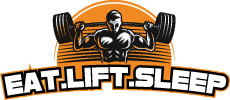Do you want to take your CrossFit workouts to the next level? If so, a burden run might be just what you need.
A burden run is a type of workout that involves carrying or dragging a heavy object while running or walking. It’s an intense exercise that challenges your strength, endurance, and mental toughness all at once.
Burden runs come in many different forms, from sandbag carries to sled drags. The idea behind them is simple: add extra weight to your body and increase the difficulty of your cardio exercises.
By doing so, you’ll build muscle mass, burn more calories, and improve your overall fitness level. In this article, we’ll explore what exactly a burden run is and how it can benefit you as a CrossFitter.
We’ll also give you some tips on how to prepare for one safely and share some sample workouts that incorporate this challenging exercise.
Definition of a Burden Run
Looking to mix up your workout routine? Check out the definition of a burden run, one of the most challenging exercises in CrossFit.
This exercise involves carrying a heavy load for a certain distance or time limit, and it’s designed to improve strength, endurance, and mental toughness.
Burden runs have become increasingly popular in recent years due to their effectiveness and versatility. The history of burden runs can be traced back centuries ago when people had to carry heavy loads as part of their daily work or military training.
Over time, this type of physical activity evolved into various forms such as stone lifting, log carrying, and pack marching.
In modern times, CrossFit has incorporated these movements into its workouts by using sandbags, kettlebells, barbells, or any other object that can be lifted and carried. Today, burden runs are an essential component of many CrossFit workouts because they challenge athletes in multiple ways.
Not only do they build strength in the upper body and core muscles, but they also test endurance and mental fortitude.
Whether you’re looking to improve your fitness level or prepare for a competition, adding burden runs to your training regimen can help you achieve your goals faster than ever before!
Benefits of a Burden Run
Feeling the burn and pushing your limits during a burden-free workout can lead to improved cardiovascular health, increased endurance, and a boost in overall strength. But imagine taking that challenge up a notch by adding a weighted object to your routine – that’s what a Burden Run is all about.
This CrossFit training technique involves carrying or dragging heavy objects while running or jogging, combining cardio with resistance training for maximum results.
One of the most significant benefits of incorporating Burden Runs into your workout routine is increased strength. By carrying or dragging weight while running, you’re engaging several muscle groups simultaneously, including your legs, core, arms, and back.
As you get stronger over time, you’ll be able to increase the weight you carry or drag and run longer distances without stopping. This type of resistance training also helps improve bone density by putting stress on bones and promoting osteogenesis.
Another benefit of Burden Runs is their ability to enhance cardiovascular endurance. Running with extra weight requires more energy than typical running; therefore, it increases heart rate and improves oxygen consumption efficiency.
Incorporating this technique into your workout routine can help build stamina for other high-intensity activities like obstacle courses or hiking.
Incorporating Burden Runs into your fitness routine can provide multiple benefits beyond just building muscle mass and improving endurance levels.
It’s an excellent way to challenge yourself physically while also fostering mental toughness as you push through physical discomfort and fatigue.
Give it a try today!
How to Prepare for a Burden Run
To prepare for a burden run in crossfit, you need to start with the right warm-up routine. Begin with some light jogging or jumping jacks and then move to dynamic stretching exercises that target your legs, back, and shoulders.
After this, it’s crucial to choose the right weight for your level of fitness. This will determine how challenging the workout will be.
Lastly, pay attention to your technique and form as you lift and carry the weights during the run to avoid injury and maximize results.
Proper Warm-Up
Before you begin your burden run crossfit workout, make sure to warm up properly with dynamic stretching and mobility exercises.
These activities help increase blood flow, improve flexibility, and prepare your muscles for the intense workout ahead.
Dynamic stretching involves moving through a range of motion while keeping the body in motion.
Some examples of dynamic stretching include lunges, leg swings, and high knees.
Mobility exercises focus on improving joint range of motion by targeting specific areas of the body such as hips or shoulders.
You can do simple mobility exercises like shoulder circles or hip openers to prepare your body for the workout ahead.
Overall, a proper warm-up is essential before any workout to prevent injuries and maximize performance during exercise.
Choosing the Right Weight
When choosing the right weight for your workout, it’s important to listen to your body and not let your ego dictate your selection. Here are some tips on how to choose the right weight:
- Start with a lighter weight: It’s better to start light and work your way up rather than starting too heavy and risking injury.
- Choose a weight that allows you to maintain proper form: If you’re struggling with maintaining good form, then it’s time to lower the weight.
- Consider equipment needs: Different exercises require different weights, so make sure you have access to the right equipment before selecting a weight.
- Increase gradually: Gradually increase the weight over time as you become stronger and more comfortable with the exercise.
By following these tips, you’ll be able to find a weight that challenges you without putting unnecessary strain on your body. Remember, safety always comes first when working out!
Technique and Form
Now that you’ve chosen the right weight for your burden run in CrossFit, it’s time to focus on your technique and form.
Common mistakes during this exercise include not maintaining a proper posture, dropping the weight too low, or not stepping high enough. To avoid these errors, keep your chest up and shoulders back while carrying the weight. This will help you maintain balance and stability throughout the run.
Additionally, ensure that you’re holding the weight close to your body with a tight grip. Keep your arms straight and don’t let them swing wildly during the run.
Expert tips include taking shorter strides to maintain control over the weight and breathing steadily throughout the exercise.
When done correctly, a burden run is an excellent way to increase endurance and build strength in your upper body, lower body, and core muscles. So make sure you’re using proper technique and form to get the most out of this challenging CrossFit workout.
Variations of a Burden Run
You’re gonna love these different ways to challenge yourself and push your limits during your workouts. The burden run is a classic CrossFit exercise that involves running while carrying a weighted object.
But did you know there are several variations of this exercise?
Here are four options for you to try:
- Weighted vest: Instead of carrying a separate weight, wear a weighted vest during your run. This will distribute the weight evenly across your body and increase the intensity of the exercise.
- Sandbag carry: Use a sandbag instead of dumbbells or kettlebells to add another level of instability to the exercise. You’ll have to work harder to keep the bag steady as you run.
- Time intervals: Rather than running for distance, set time intervals for your runs. For example, sprint with weights for 30 seconds followed by 30 seconds of rest, then repeat for several rounds.
- Team burden run: Grab a partner or two and take turns carrying the weight during your run. This will add an element of teamwork and motivation as you cheer each other on.
These variations give you plenty of options to mix up your workout routine and keep challenging yourself with new goals and objectives!
Whether it’s adjusting weight options or changing up time intervals, don’t be afraid to experiment with different approaches until you find what works best for you!
CrossFit and Burden Runs
You’re likely wondering why CrossFit incorporates burden runs into their workouts. The answer is simple: it’s an effective way to build functional strength and endurance while also increasing mental toughness.
By carrying a weighted object, such as a sandbag or kettlebell, for a certain distance or time, you’ll challenge your body in new ways.
Some famous CrossFit burden run workouts include the ‘Murph’ and ‘Lumberjack 20.’ ‘Murph’ consists of running one mile followed by 100 pull-ups, 200 push-ups, and 300 air squats before finishing with another mile run while wearing a weight vest.
‘Lumberjack 20’ involves running 400 meters while carrying two dumbbells before completing various exercises such as box jumps and cleans for five rounds.
Why CrossFit Incorporates Burden Runs
When incorporating exercises that involve carrying heavy objects and running, CrossFit aims to challenge your endurance and strength simultaneously, pushing you to your limits.
Burden runs are a staple in CrossFit workouts because they provide a unique way of training that mimics real-life situations where you might need to carry heavy loads over long distances.
Here are some reasons why CrossFit incorporates burden runs:
- Importance of endurance: Burden runs require a lot of physical stamina, as you have to carry the weight while running or jogging for several meters or minutes. By adding this exercise in your routine, CrossFit helps improve your cardiovascular endurance and muscular endurance at the same time.
- Role of teamwork: In many cases, burden runs are done with partners or teams. This promotes teamwork and cooperation among CrossFitters, as it tests their ability to communicate effectively while carrying out complex physical tasks together.
Overall, burden runs can be challenging but extremely rewarding for those who want to take their fitness journey to the next level. They not only improve your physical strength and performance but also promote mental toughness and resilience when faced with difficult challenges.
Famous CrossFit Burden Run Workouts
Get ready to spice up your workout routine with some famous CrossFit workouts that incorporate carrying heavy objects and running, pushing you to challenge your endurance and strength simultaneously.
These Burden Run challenges are often incorporated into Crossfit competitions, testing the athletes’ physical limits.
Here are some of the most well-known burden run workouts in CrossFit:
| Workout | Description |
|---|---|
| Murph | 1-mile run, 100 pull-ups, 200 push-ups, 300 squats, followed by another 1-mile run all while wearing a weighted vest. |
| Jerry Can Relay | Two-person team carries two Jerry cans (40-50 lbs each) for a specified distance or time. The team must switch off every few meters or minutes until they complete the course. |
| Sandbag Sprint Ladder | Set up sandbags of varying weights at different distances from the starting line (e.g., 50lb bag at 10m distance; 60lb bag at 20m distance; etc.). Sprint out to each bag one by one and carry it back to the start line before moving onto the next one. |
These workouts may seem intense but they can be modified based on fitness level – so don’t let them scare you away from incorporating burden runs into your own training!
Sample Burden Run Workouts
Looking for some challenging workouts to push yourself to the limit? Here are a few sample routines that will have you sweating and feeling accomplished in no time!
Burden runs are known for their intensity, as they require you to carry heavy weights while running or doing other exercises. To perform a burden run workout, you’ll need some basic equipment like sandbags, kettlebells, dumbbells, or weight plates.
One of the most popular burden run challenges is the ‘Death March,’ which involves carrying two heavy kettlebells for a distance of at least one mile.
You can also try the ‘Farmer’s Walk,’ where you hold two weight plates in each hand and walk as far as possible without dropping them. Another option is the ‘Med Ball Carry,’ where you hold a medicine ball above your head while jogging or sprinting.
To make your burden run workouts even more challenging, you can add other exercises like burpees, lunges, squats, or push-ups between sets. For example, you could do 10 burpees after each 100-meter sprint with a sandbag on your shoulders.
Or you could perform 20 walking lunges with dumbbells after each lap around the track carrying a weight plate.
Incorporating burden run challenges into your training routine can help improve your strength, endurance, and mental toughness. By pushing yourself out of your comfort zone and testing your limits regularly, you’ll become stronger physically and mentally.
So grab some burden run equipment and start experimenting with different workouts today!
Safety Considerations
Before starting any weight-bearing exercise, it’s essential to ensure you’re using proper form and technique to prevent injury. The burden run is no exception.
It’s important to keep your core engaged and maintain a straight spine throughout the movement. You should also make sure that you’re wearing appropriate footwear with good support.
In addition to injury prevention, there are some equipment requirements to consider when doing a burden run. You’ll need a weighted object such as a sandbag or medicine ball that you can carry while running.
Make sure the weight is evenly distributed and secured properly so it doesn’t shift around during the workout. It’s also important to have enough space for the run, both in terms of distance and height clearance if you’re carrying an overhead object.
It’s crucial to take safety considerations seriously when doing any type of exercise, including the burden run. By following proper form and technique guidelines and ensuring you have appropriate equipment, you can greatly reduce your risk of injury.
Always listen to your body and stop immediately if something feels wrong or uncomfortable during the workout.
How Does RKBS (Russian Kettlebell Swings) Benefit CrossFit Training?
Russian Kettlebell Swings (RKBS) bring numerous benefits to CrossFit training, enhancing overall performance. Demystifying rkbs in crossfit, this exercise helps develop explosive hip power, increases core strength, and promotes proper movement mechanics. Incorporating RKBS into CrossFit routines improves mobility, flexibility, and endurance, contributing to improved athletic performance and injury prevention. Boost your CrossFit training with the dynamic advantages of demystifying RKBS in CrossFit.
Conclusion
So, now you know what a burden run is and how it can benefit your fitness routine. Whether you’re a CrossFit enthusiast or just looking for a new challenge, incorporating burden runs into your workouts can increase your endurance, strength, and mental toughness.
Remember to properly prepare yourself before attempting a burden run and consider variations that suit your fitness level. Safety should always be a top priority when doing any physical activity.
With proper preparation and caution, the burden run can be an exciting addition to your fitness journey. So, why not give it a try?




